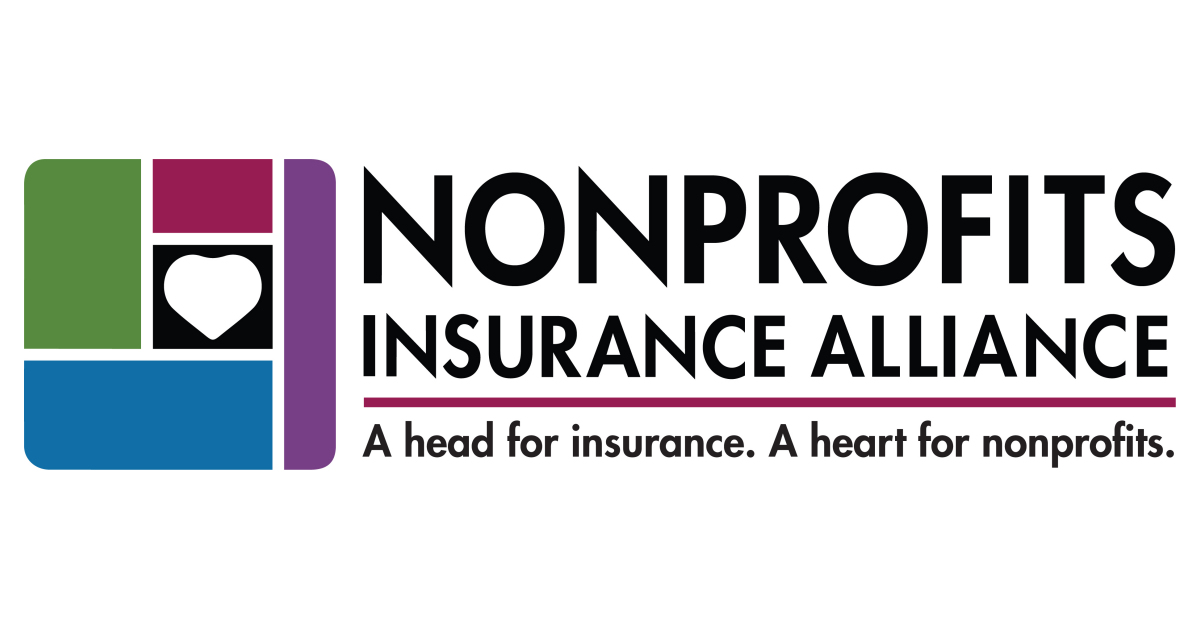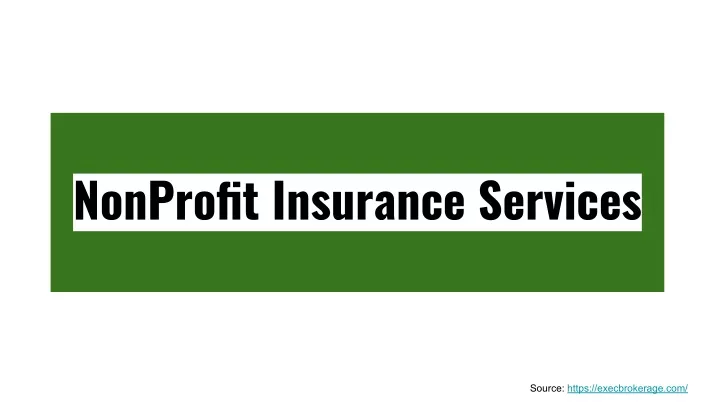Navigating the complex world of insurance can be a daunting task for any organization, but for nonprofits, it can feel like an insurmountable hurdle. These organizations, dedicated to serving their communities and advancing important causes, often struggle to secure the necessary coverage at affordable rates. This is where nonprofit insurance alliances come in, offering a lifeline to organizations seeking reliable and cost-effective insurance solutions.
Nonprofit insurance alliances are collaborative groups that pool resources and expertise to provide a wide range of insurance products and services tailored specifically for nonprofits. These alliances leverage their collective bargaining power to secure competitive rates and negotiate favorable terms, allowing nonprofits to focus on their core missions without being bogged down by the complexities of insurance.
Introduction to Nonprofit Insurance Alliances
Nonprofit insurance alliances are organizations that pool together resources and leverage collective buying power to secure affordable and comprehensive insurance coverage for their members. These alliances act as intermediaries between their member nonprofits and insurance providers, providing access to specialized insurance programs and risk management solutions.
The primary purpose of nonprofit insurance alliances is to address the unique insurance needs of nonprofits. Nonprofits often face challenges in securing affordable and comprehensive insurance due to their unique risk profiles and limited resources. By banding together, nonprofits can leverage the collective buying power of a larger group, allowing them to negotiate more favorable insurance rates and coverage options.
Benefits of Joining a Nonprofit Insurance Alliance
Joining a nonprofit insurance alliance offers numerous advantages for nonprofits, including:
- Reduced Insurance Costs: By pooling resources, nonprofits can negotiate lower premiums and secure more competitive insurance rates. This allows them to allocate more funds towards their mission and programs.
- Increased Coverage Options: Nonprofits gain access to a wider range of insurance products and coverage options tailored to their specific needs, including liability, property, workers’ compensation, and directors & officers insurance.
- Improved Risk Management: Alliances often provide access to risk management expertise and resources, including training, education, and best practices. This helps nonprofits mitigate risks and prevent potential claims.
- Access to Advocacy and Support: Nonprofits benefit from the collective voice and advocacy efforts of the alliance, ensuring their interests are represented in the insurance market. This includes lobbying for favorable legislation and advocating for changes to insurance regulations.
Types of Nonprofit Insurance Alliances
Nonprofit insurance alliances operate in various forms, catering to different types of nonprofits and specific insurance needs. Common types of alliances include:
- National Alliances: These alliances operate nationwide, providing insurance solutions to a broad range of nonprofits across different sectors. Examples include the Council on Foundations Insurance Program and the Nonprofit Risk Management Center.
- State Alliances: These alliances focus on providing insurance solutions to nonprofits within a specific state or region. They often have a deeper understanding of the local regulatory environment and the needs of nonprofits in that area.
- Sector-Specific Alliances: These alliances cater to the unique insurance needs of nonprofits operating within a particular sector, such as healthcare, education, or arts and culture. They provide specialized insurance programs and risk management resources tailored to the specific challenges of their sector.
Key Services Offered by Nonprofit Insurance Alliances

Nonprofit insurance alliances offer a range of insurance products and services designed to meet the unique needs of their members. These alliances provide a valuable resource for nonprofits, offering access to competitive pricing, specialized coverage, and comprehensive risk management support.
Insurance Products Offered by Nonprofit Insurance Alliances
Nonprofit insurance alliances typically offer a comprehensive suite of insurance products tailored to the specific needs of nonprofits. These products are often bundled together to provide a one-stop solution for all insurance needs.
- Property and Casualty Insurance: This coverage protects nonprofits against financial losses due to damage to their buildings, equipment, and other assets. It can also cover liability claims arising from accidents or incidents on their property.
- Liability Insurance: This coverage protects nonprofits against lawsuits arising from injuries or damages caused by their activities or negligence. It can include coverage for general liability, professional liability, and directors and officers liability.
- Workers’ Compensation Insurance: This coverage provides benefits to employees who are injured or become ill on the job. It can include medical expenses, lost wages, and rehabilitation services.
- Cybersecurity Insurance: This coverage protects nonprofits from financial losses due to cyberattacks, data breaches, and other cybersecurity incidents. It can include coverage for data recovery, legal expenses, and regulatory fines.
- Volunteer Insurance: This coverage provides liability protection for volunteers who are injured or cause injury while performing services for the nonprofit.
- Fiduciary Liability Insurance: This coverage protects nonprofits against claims arising from the actions of their board members and other fiduciaries.
Benefits of Using Nonprofit Insurance Alliances
Nonprofit insurance alliances offer a number of advantages over traditional insurance providers. These benefits include:
- Competitive Pricing: Nonprofit insurance alliances can leverage their collective bargaining power to negotiate lower premiums for their members.
- Specialized Coverage: Nonprofit insurance alliances offer coverage tailored to the specific needs of nonprofits, including coverage for unique risks and activities.
- Risk Management Support: Nonprofit insurance alliances provide comprehensive risk management support, including training, resources, and expert advice.
- Access to Expertise: Nonprofit insurance alliances have access to experienced insurance professionals who understand the unique challenges faced by nonprofits.
- Community of Practice: Nonprofit insurance alliances provide a platform for nonprofits to share best practices and learn from each other.
Comparison of Services Offered by Different Alliances
Nonprofit insurance alliances differ in the specific services they offer. Some alliances specialize in certain types of coverage, while others offer a broader range of products. It’s important to compare the services offered by different alliances to find the best fit for your organization.
- Coverage Options: Some alliances offer a wider range of insurance products than others. It’s important to consider the specific coverage needs of your organization when selecting an alliance.
- Pricing: Nonprofit insurance alliances vary in their pricing structures. It’s important to compare premiums and deductibles from different alliances to find the most affordable option.
- Risk Management Services: Some alliances offer more comprehensive risk management support than others. It’s important to consider the level of risk management expertise and resources provided by different alliances.
- Member Support: Nonprofit insurance alliances vary in their level of member support. It’s important to consider the availability of customer service, claims assistance, and other support services.
Membership and Participation in Nonprofit Insurance Alliances

Nonprofit insurance alliances offer a unique and valuable opportunity for organizations to pool resources, leverage collective bargaining power, and secure affordable insurance coverage. Joining an alliance typically involves a straightforward process that ensures a smooth transition for new members.
Membership Application and Approval Process
To join a nonprofit insurance alliance, organizations must submit a formal application that Artikels their mission, operations, and insurance needs. This application is typically reviewed by the alliance’s board of directors or a designated membership committee. The review process involves assessing the applicant’s financial stability, risk profile, and alignment with the alliance’s values and objectives. Once approved, the organization becomes a member of the alliance and gains access to its insurance programs and services.
Membership Levels and Associated Benefits
Nonprofit insurance alliances often offer different membership levels, each with its own set of benefits and responsibilities. The most common membership levels include:
- Basic Membership: This level provides access to the alliance’s core insurance programs and services, including risk management resources, group insurance plans, and claims handling support. Members at this level may have limited voting rights or participation in decision-making processes.
- Premium Membership: Premium members enjoy enhanced benefits, such as increased voting rights, access to exclusive networking events, and priority service for claims handling. They may also have the opportunity to participate in alliance committees or working groups.
- Founding Membership: This level is often reserved for organizations that have played a significant role in the alliance’s establishment or development. Founding members may have greater influence over the alliance’s strategic direction and governance.
Roles and Responsibilities of Members
Members of nonprofit insurance alliances play a crucial role in ensuring the success and sustainability of the organization. Their responsibilities include:
- Paying Membership Dues: Members are required to pay annual dues to support the alliance’s operational costs and insurance programs.
- Participating in Decision-Making Processes: Members may have voting rights or participate in committees or working groups to influence the alliance’s policies and programs.
- Adhering to Alliance Rules and Regulations: Members are expected to comply with the alliance’s bylaws, codes of conduct, and other governing documents.
- Sharing Best Practices and Resources: Members can contribute to the alliance’s knowledge base by sharing their experiences, expertise, and resources.
- Promoting the Alliance’s Mission: Members can act as ambassadors for the alliance by advocating for its services and promoting its value proposition to other organizations.
Financial Stability and Risk Management

Nonprofit insurance alliances are designed to provide financial stability and mitigate risk for their members. These alliances operate on a collaborative model, pooling resources and sharing risk to achieve greater financial security. Their structure and risk management strategies ensure a stable environment for members, allowing them to focus on their core missions.
Financial Structure and Stability
Nonprofit insurance alliances typically operate as a self-funded entity. They generate revenue through member premiums and investment income. The accumulated funds serve as a reserve to cover potential claims and operating expenses. This self-funding model provides a high level of financial stability and independence.
- Member Premiums: The primary source of revenue for nonprofit insurance alliances is member premiums. These premiums are calculated based on the risk profile of each member and are used to build a pool of funds to cover potential claims.
- Investment Income: Nonprofit insurance alliances invest their reserve funds to generate additional income. This income stream contributes to the financial stability of the alliance and helps to offset potential losses.
- Risk Sharing: By pooling resources and sharing risk, nonprofit insurance alliances reduce the financial burden on individual members. If a member experiences a significant claim, the alliance can draw on the collective funds to cover the cost, preventing financial hardship.
Risk Management Strategies
Nonprofit insurance alliances employ a range of risk management strategies to minimize potential losses and protect the financial stability of the alliance and its members. These strategies include:
- Underwriting: The process of evaluating and selecting members based on their risk profiles is crucial for financial stability. This helps to ensure that the pool of members is not overly concentrated in high-risk areas.
- Loss Control: Nonprofit insurance alliances implement programs and initiatives to help members reduce their risk exposure. This can include safety training, risk assessments, and best practices guidance.
- Reinsurance: Alliances may purchase reinsurance to transfer some of their risk to other insurers. This helps to protect the alliance from catastrophic losses and provides an additional layer of financial security.
Examples of Risk Mitigation
Nonprofit insurance alliances often provide specialized risk management services tailored to the needs of their members. Here are some examples:
- Cybersecurity: In an increasingly digital world, nonprofit insurance alliances offer cybersecurity risk assessment and mitigation strategies to help members protect their data and systems from cyberattacks. This can include training, best practices guidance, and access to specialized cybersecurity insurance.
- Employee Benefits: Alliances can provide risk management solutions for employee benefits programs, including group health insurance, disability insurance, and retirement plans. They offer competitive pricing and access to specialized expertise in employee benefits management.
- Property and Casualty Insurance: Nonprofit insurance alliances provide property and casualty insurance for members, covering risks such as fire, theft, and natural disasters. They often offer competitive pricing and customized coverage options to meet the specific needs of their members.
Advocacy and Support for Nonprofits
Nonprofit insurance alliances play a crucial role in advocating for the interests of their member organizations, navigating complex regulatory landscapes, and ensuring their financial stability. They serve as a collective voice, amplifying the concerns and needs of nonprofits to policymakers and regulators, thereby influencing legislation and regulations that impact their operations.
Advocacy Efforts of Nonprofit Insurance Alliances
Nonprofit insurance alliances actively engage in advocacy efforts to ensure a favorable environment for nonprofits. They achieve this through various means, including:
- Lobbying and Advocacy: Alliances advocate for legislation and regulations that support the interests of nonprofits, such as tax-exempt status, charitable giving incentives, and favorable insurance regulations. They actively engage with policymakers and legislators to influence policy decisions.
- Public Awareness Campaigns: Alliances conduct public awareness campaigns to educate the public about the vital role of nonprofits in society and the challenges they face. They raise awareness about issues affecting nonprofits, such as funding cuts, regulatory burdens, and public perception.
- Research and Analysis: Alliances conduct research and analysis on issues affecting nonprofits, providing data and insights to policymakers and the public. This research helps to inform policy decisions and shape public discourse on nonprofit issues.
Support for Nonprofits in Navigating Regulatory and Legislative Challenges
Nonprofit insurance alliances provide essential support to their member organizations in navigating regulatory and legislative challenges. They offer:
- Regulatory Guidance and Interpretation: Alliances provide guidance and interpretation of complex regulations, ensuring that nonprofits comply with legal requirements and avoid potential penalties.
- Legislative Updates and Advocacy: Alliances keep members informed about pending legislation and regulations that could impact their operations. They provide advocacy resources and support to help nonprofits navigate these challenges.
- Networking and Collaboration: Alliances foster networking and collaboration among member organizations, enabling them to share best practices, learn from each other’s experiences, and advocate for common interests.
Resources and Services Provided by Alliances
Nonprofit insurance alliances provide a wide range of resources and services to assist their member organizations. These include:
- Insurance Products and Services: Alliances offer tailored insurance products and services designed specifically for nonprofits, addressing their unique risks and needs. They often provide competitive rates and specialized coverage options.
- Risk Management Expertise: Alliances provide risk management expertise to help nonprofits identify, assess, and mitigate potential risks. They offer training, resources, and tools to enhance risk management practices.
- Financial and Legal Assistance: Alliances provide financial and legal assistance to nonprofits, helping them navigate complex financial matters and legal issues. They offer guidance on fundraising, budgeting, and compliance with legal requirements.
- Training and Education: Alliances offer training and education programs to enhance the skills and knowledge of nonprofit staff and board members. They provide workshops and seminars on topics such as governance, fundraising, risk management, and legal compliance.
Case Studies and Success Stories

Nonprofit insurance alliances offer numerous benefits to their member organizations, providing access to specialized insurance products, risk management expertise, and advocacy support. These alliances often have a proven track record of helping nonprofits navigate the complexities of insurance and mitigate potential risks.
Real-World Examples of Nonprofits Benefiting from Insurance Alliances
Here are some examples of nonprofits that have successfully leveraged the advantages of joining an insurance alliance:
- The Arts Center: This nonprofit organization, dedicated to promoting artistic expression, faced challenges securing affordable and comprehensive insurance coverage for its building and activities. By joining a nonprofit insurance alliance, it gained access to specialized insurance programs tailored to the unique needs of arts organizations, including coverage for artwork, exhibitions, and events. The alliance’s risk management resources helped the Arts Center identify and mitigate potential hazards, reducing its overall insurance costs.
- Community Health Clinic: This clinic, providing essential healthcare services to underserved populations, required insurance coverage that protected its operations and staff from liability risks. The nonprofit insurance alliance it joined offered specialized insurance programs for healthcare providers, including medical malpractice insurance and liability coverage. The alliance’s advocacy efforts helped the clinic navigate regulatory changes and access resources to ensure its financial stability.
- Educational Foundation: This foundation, dedicated to supporting educational initiatives, needed insurance coverage for its assets, including buildings, equipment, and volunteer activities. The alliance it joined offered a comprehensive insurance package specifically designed for educational nonprofits, including property and liability coverage, as well as coverage for volunteer activities. The alliance’s risk management experts provided guidance on safety protocols and risk mitigation strategies, reducing the foundation’s overall insurance costs.
Industry Trends and Future Directions

The nonprofit insurance sector is evolving rapidly, driven by a confluence of factors, including technological advancements, regulatory changes, and the evolving needs of nonprofits. These trends present both opportunities and challenges for nonprofit insurance alliances, requiring them to adapt and innovate to remain competitive and effective.
Impact of Emerging Technologies
The adoption of emerging technologies is reshaping the nonprofit insurance landscape. These technologies offer opportunities to streamline operations, enhance risk management practices, and improve customer service.
- Artificial Intelligence (AI): AI-powered tools can automate tasks, improve claims processing, and identify potential risks. For example, AI algorithms can analyze data to detect patterns in claims, identify fraud, and assess risk profiles. This can help alliances make more informed decisions, reduce costs, and improve efficiency.
- Blockchain: Blockchain technology can enhance transparency and security in insurance transactions. It can be used to track claims, manage policies, and ensure the integrity of data. This can improve trust and accountability within the nonprofit insurance ecosystem.
- Internet of Things (IoT): IoT devices can collect data on risk factors, allowing alliances to develop more tailored insurance products and services. For example, sensors in buildings can monitor environmental conditions and alert alliances to potential hazards. This data can be used to improve risk assessment, pricing, and loss prevention strategies.
Regulatory Changes and Compliance
The regulatory landscape for the nonprofit insurance sector is constantly evolving, with new regulations being introduced to address emerging risks and ensure consumer protection.
- Data Privacy Regulations: Regulations like the General Data Protection Regulation (GDPR) and the California Consumer Privacy Act (CCPA) require alliances to protect the privacy of their members’ data. This requires alliances to implement robust data security measures and ensure transparency in data collection and usage.
- Cybersecurity Regulations: As cyber threats become more sophisticated, alliances need to comply with evolving cybersecurity regulations. This includes implementing strong security protocols, conducting regular security audits, and ensuring data backups and disaster recovery plans are in place.
- Climate Change and Sustainability: Regulatory changes are being introduced to address the risks posed by climate change. Alliances need to adapt their risk assessment practices and insurance products to account for the impacts of climate change, such as extreme weather events and rising sea levels.
Future Directions and Innovations
Nonprofit insurance alliances are exploring innovative approaches to meet the evolving needs of their members. These include:
- Personalized Insurance Products: Alliances are developing customized insurance products that cater to the specific needs of different nonprofit organizations. This involves leveraging data analytics to understand the unique risks faced by each organization and tailoring coverage accordingly.
- Risk Management Services: Alliances are expanding their services beyond insurance to include risk management consulting and training. This helps nonprofits identify and mitigate risks, improve operational efficiency, and reduce insurance costs.
- Collaboration and Partnerships: Alliances are collaborating with other organizations, such as technology providers and industry experts, to develop innovative solutions. This can involve sharing best practices, developing new technologies, and expanding access to resources.
Resources and Information for Nonprofits

Nonprofit organizations require access to comprehensive resources and information to make informed decisions about their insurance needs. This section provides a valuable overview of the resources and information available to nonprofits seeking insurance solutions, helping them navigate the complex world of insurance and find the best fit for their unique requirements.
Types of Resources Available
Nonprofits can leverage a variety of resources to enhance their understanding of insurance and identify suitable options. These resources can be broadly categorized as follows:
- Nonprofit Insurance Alliances: These alliances provide a wealth of information and resources tailored specifically for nonprofits. They offer educational materials, webinars, and networking opportunities to help nonprofits understand their insurance needs and find the best coverage options.
- Insurance Brokers and Agents: Experienced brokers and agents specializing in nonprofit insurance can provide valuable guidance and support throughout the insurance selection process. They can assess a nonprofit’s specific risks, compare different insurance options, and negotiate competitive rates.
- Industry Publications and Websites: Numerous industry publications and websites offer valuable insights into insurance trends, best practices, and regulatory updates relevant to nonprofits. These resources can help nonprofits stay informed about industry developments and make informed decisions about their insurance coverage.
- Government Agencies and Regulatory Bodies: Government agencies and regulatory bodies play a crucial role in overseeing the insurance industry and protecting consumers. They provide information about insurance regulations, consumer rights, and complaint resolution processes.
Finding the Best Insurance Alliance
Choosing the right insurance alliance for a nonprofit’s needs is a critical decision. To make an informed choice, nonprofits should consider the following factors:
- Services Offered: Evaluate the range of services provided by the alliance, including risk management resources, claims handling, and advocacy support.
- Financial Stability and Reputation: Assess the alliance’s financial stability and track record of providing reliable insurance coverage.
- Membership and Participation: Consider the size and diversity of the alliance’s membership base, as well as the opportunities for participation in networking events and educational programs.
- Cost and Value: Compare the costs of membership and insurance premiums offered by different alliances, ensuring that the value provided aligns with the nonprofit’s budget and insurance needs.
Conclusion
Nonprofit insurance alliances offer a valuable solution for nonprofits seeking to manage risk and ensure financial stability. By pooling resources and expertise, these alliances provide access to specialized insurance products, risk management tools, and advocacy support.
Benefits of Nonprofit Insurance Alliances
Nonprofit insurance alliances play a crucial role in supporting the mission of nonprofits by providing a range of benefits, including:
- Access to Specialized Insurance Products: Nonprofits often face unique risks that require specialized insurance coverage. Alliances offer tailored insurance products designed to meet the specific needs of nonprofits, such as liability, property, and professional liability insurance.
- Risk Management Expertise: Alliances provide access to risk management professionals who can help nonprofits identify and mitigate potential risks. This expertise can help nonprofits reduce the likelihood of claims and improve their overall risk profile.
- Cost Savings: By pooling resources, alliances can negotiate lower insurance premiums for their members. This can free up valuable funds that nonprofits can use to further their mission.
- Advocacy and Support: Alliances actively advocate for the interests of nonprofits, working to ensure that they have access to fair and affordable insurance. They also provide educational resources and support to help nonprofits navigate the complex world of insurance.
Conclusive Thoughts

Nonprofit insurance alliances represent a powerful force for good in the world of philanthropy. By providing access to essential insurance coverage and valuable resources, these alliances empower nonprofits to thrive and continue their vital work without facing unnecessary financial burdens. Whether you’re a small grassroots organization or a large national charity, exploring the benefits of joining a nonprofit insurance alliance can be a strategic move that strengthens your organization’s financial stability and ensures your mission’s continuity for years to come.

